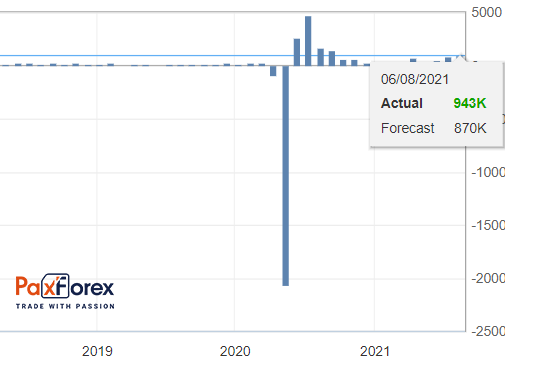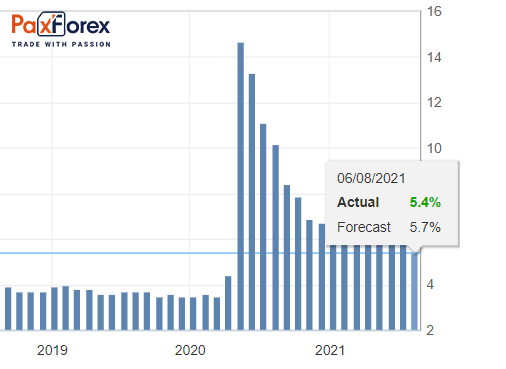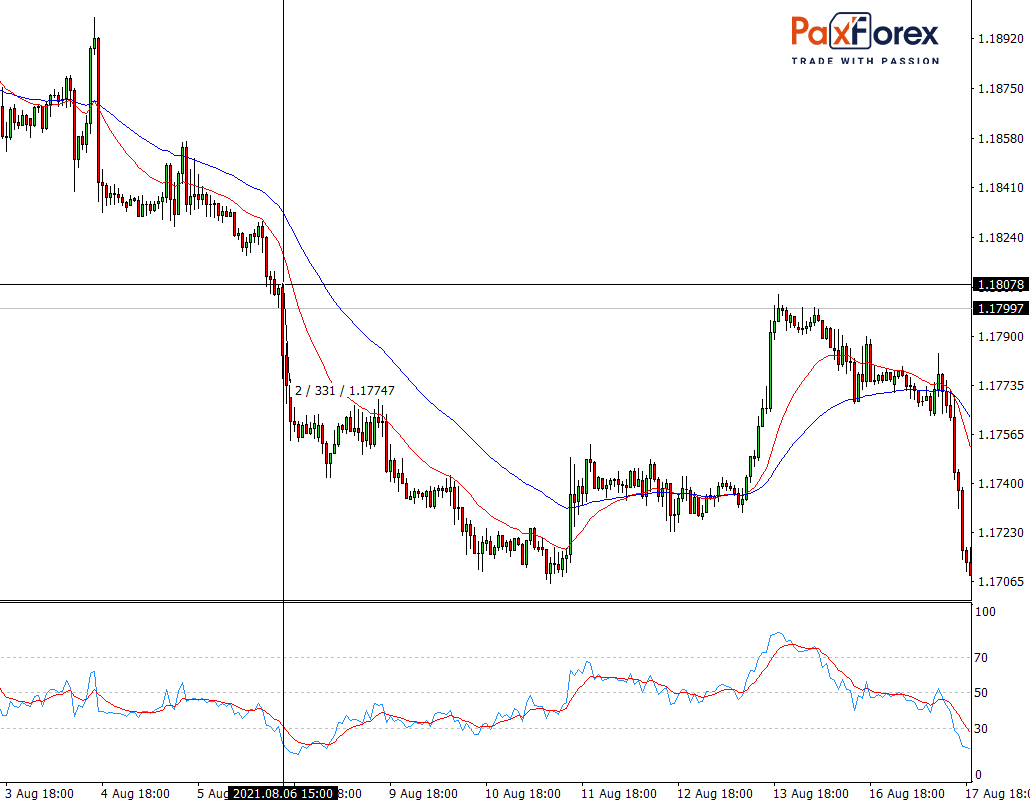
Source: PaxForex Premium Analytics Portal, Technical Insight
The U.S. Federal Reserve has repeatedly made it clear that the main criterion for winding down support measures would be a stronger labor market. Most interestingly, after disappointing data in July, where unemployment rose to 5.9%, we saw a strong strengthening in August, with unemployment falling to 5.4%. Many analyst agencies have noted that the growth in the labor market has been hampered by those very "American" payouts. In other words, many companies noted labor shortages. Accordingly, the pay cuts that began in late June have not yet had time to affect the June data, but we have seen an excellent strengthening of the labor market in July. The number of jobless claims continues to decline. Both total and initial jobless claims are down. Perhaps not at the pace we would like, but it is continuing. Looking at the labor market, the Fed's goal of 4% unemployment could be reached very soon.
Non-Farm Payrolls Employment
- Last data: 943K
- Consensus Forecast: 750K
The Non-Farm employment change measures the change in the number of people employed during the last month in the non-farm sector. Total Non-Farm Payrolls represent about 80% of the workers who produce all of the Gross Domestic Product of the United States.
It is the most important piece of data contained in the employment report that offers the best overview of the economy.
Monthly changes and adjustments in the data can be very volatile.

U.S. Average Hourly Earnings YoY
- Last data: 0.4%
- Consensus forecast: 0.3%
This indicator shows the change in the average hourly wage level for major industries, except agriculture.

Unemployment Rate
- Past data: 5.4%
- Consensus forecast: 5.2%
The unemployment rate measures the percentage of the total labor force that is unemployed but actively looking for a job and willing to work in the United States.
A high percentage indicates weakness in the labor market. A low percentage is positive for the U.S. labor market and should be taken as a positive factor for the USD.

In the previous release of data, the movement on the EUR/USD currency pair at that moment made 33 points:

At the same time, having developed movement at 68 points within a few days:











